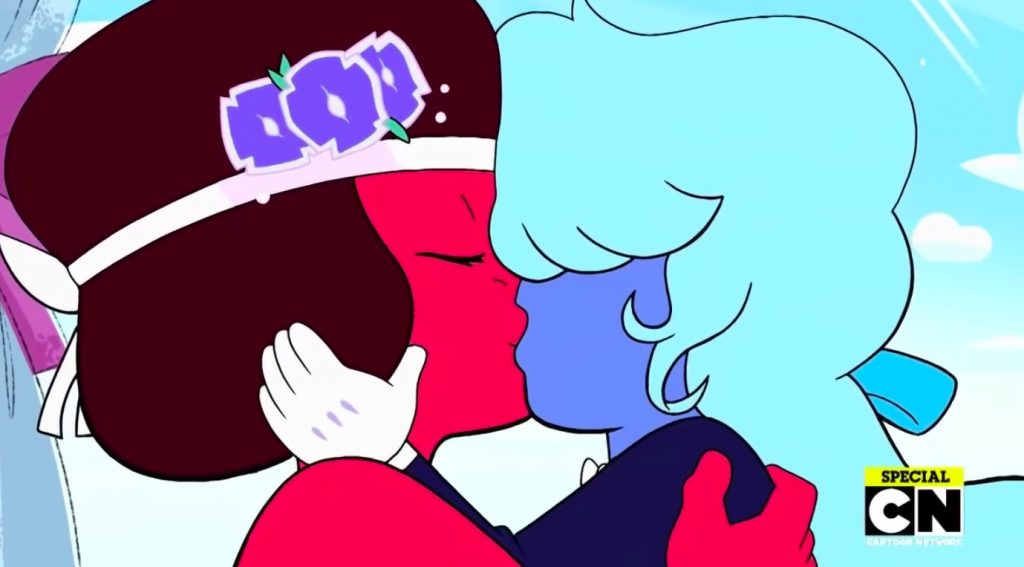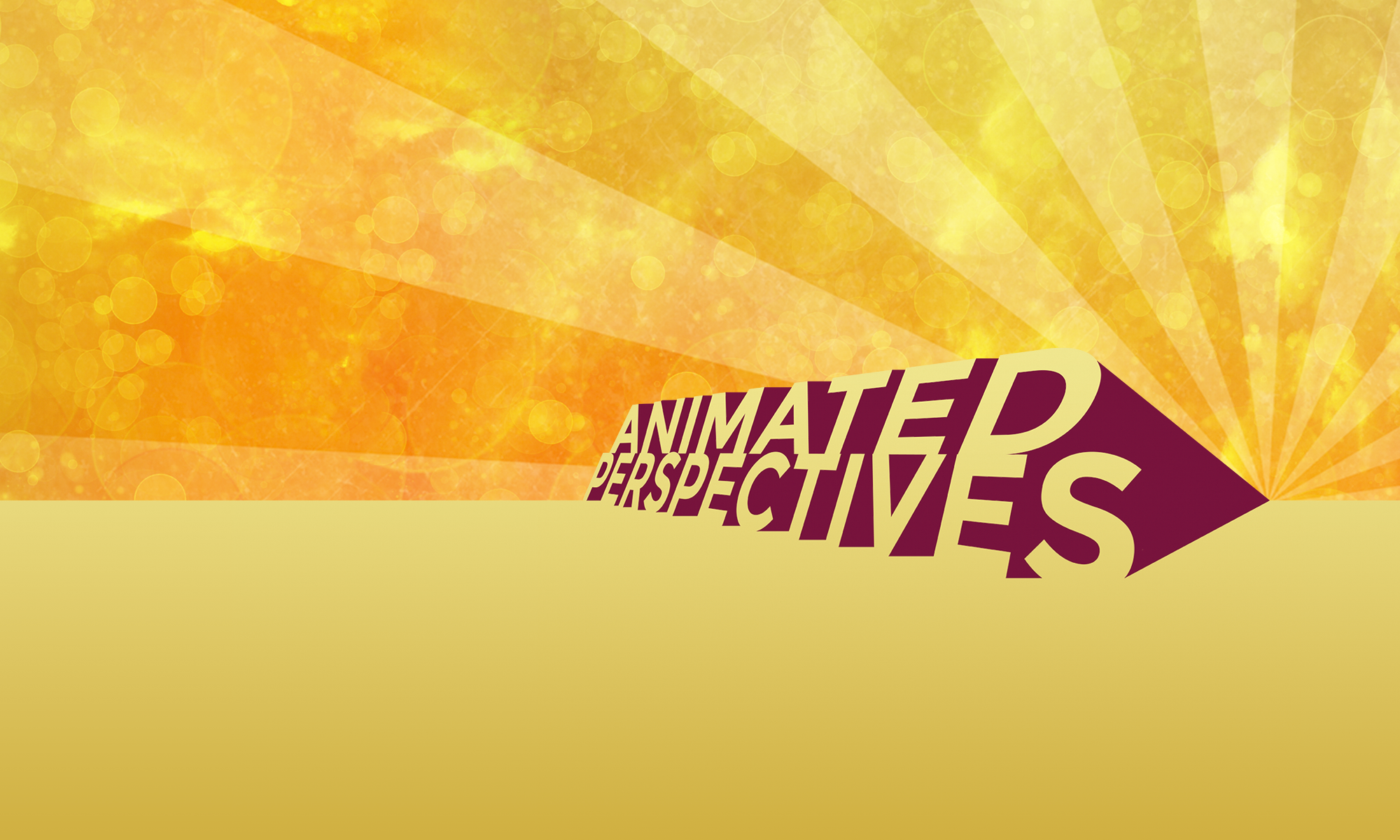
Media conglomerates that are as large as Disney care about appealing to as many people as they can, thus making as much money as they can. Disney will even try to lure in more viewers by announcing “our first gay character!” for what seems like the tenth time. These “first gay characters” are hardly what the LGBTQ+ community would consider representation. From two female characters walking next to each other in Finding Dory to the cyclops cop in Onward, it’s not only frustrating but insulting to members of the LGBTQ+ community (myself included), who wish to see themselves represented in a positive light.
In fact, according to a study by GLAAD (the Gay and Lesbian Alliance Against Defamation), in 2018, there were only 45 LGBTQ+ characters in mainstream media releases, and only 19 of those characters were queer women. The US population is about 325 million, with an estimated population of LGBTQ+ women at 5.1%. This amount may not seem like a lot, but it’s over 16 million women who identify as part of the community. Meanwhile, Disney’s feature films put these “blink-and-you-miss-it” nods to the LGBTQ+ community. Disney does this to make it easy for other countries to easily cut out the scenes without changing the story. Not only does this quick edit allow Disney to still make millions overseas, but also continues the cycle of announcing a gay character, and leaving queer audiences once again disappointed. A few examples of Disney’s “first openly gay character” are the two women who kissed in the background in Star Wars: The Rise of Skywalker, a gay man mentioning a date in a scene of Avengers: Endgame, and of course the cyclops police officer who mentions “her girlfriend” in Onward.
Yes, these examples are disappointing and insulting, and believe it or not, there was still backlash over these background characters. While it is disappointing to see a company like Disney not take representation seriously, queer women in animated TV have made a positive impact over these recent years. It is essential to acknowledge Steven Universe, a show that wouldn’t have made the impact it did if it weren’t for its queer creator, Rebecca Sugar. She pushed for inclusivity in her show, especially for queer stories. It was groundbreaking for its wedding episode between two female-identifying characters that aired before same-sex marriage was legalized by the Supreme Court. The Legend of Korra showed two young women who loved each other in a positive light onscreen. The creators fought for more but still ended up with the characters holding hands and the creators confirmed the two being in a romantic relationship. Adventure Time also surprised fans with an on-screen kiss between two of the show’s main female characters. While their relationship did not get a lot of screen time, it was still a good relationship to show to audiences. Most recently, queer creator Noelle Stevenson made history with her inclusive show She-Ra and the Princess of Power that featured multiple queer characters and couples who were developed and shown in a positive light. The two main women in the show, both complex and strong have an on-screen kiss, creating more positive content for queer women.

Parents concerned that their children are being “indoctrinated” or that gay characters are “too sexual” for children is heartbreaking. The representation we have for queer women in animation is something I wish I had growing up. As a queer woman myself, growing up only seeing heterosexual couples was difficult. There was no kid-friendly content featuring positive LGBTQ+ representation that I could look up to. In my opinion, it sometimes forces queer children to grow up too fast, since starving for queer content means turning to media that is geared toward adults. It also feels invalidating to not see yourself on screen. It’s interesting that parents who are against LGBTQ+ content in animation say “it will turn my kid gay”, while most queer kids grew up with heteronormativity and, obviously, stayed queer.
Seeing this recent rise of queer content in animation, especially of queer women who are complex, strong, intelligent, and role models gives me hope. Young queer girls will have their self-discovery journeys early in life and be able to see themselves onscreen at a young age. While Disney isn’t doing much to help the queer community, animated television is breaking grounds for inclusivity. I am looking forward to what animated television will look like in terms of LGBTQ+ representation 10 years from now.
Sources:
https://www.bbc.com/news/world-us-canada-48350023
https://news.gallup.com/poll/234863/estimate-lgbt-population-rises.aspx
https://www.glaad.org/sri/2019/overview
https://www.thrillist.com/entertainment/nation/queer-women-lgbtq-characters-animated-tv-series
https://variety.com/2020/tv/features/rebecca-sugar-cartoon-network-steven-universe-1203537231/

When I read this post, I was thinking of this video that Lindsey Ellis did about woke Disney/ how their live-action reboots weave in political commentary, when really the goal is to be progressive so that you still like Disney. I think that if characters of an underrepresented community are added into media and don’t serve a purpose, it just seems like an ingenue and petty move. I do agree that animated TV has done a much better job over the years with LGBTQ+ representation and especially since showrunners have fought for their characters and stories from the community. I’ll be honest that a lot of the brief moments of LGBTQ+ representation in Disney/ Pixar films has gone over my head and I don’t remember a lot of them, but I guess that’s because the characters’ appearances were so brief. I hope that representation of the LGBTQ+ community will continue to grow and hopefully, representation in film will shift to being more like what’s been seen in animated TV.
God… I’m so ticked that some people use the terms ‘indoctrination’ and ‘too sexual’ simply as an excuse to bar LGBT+ content in media. It’s infuriating. I mean, have you SEEN what young kids are subjected to on a daily basis? Our society is hypersexualized and yet a kiss is suddenly ‘too much’? BS.
On the other hand, I love the rise in LGBT+ representation and content in the tv shows, movies…etc. The more facets of humanity growing people are shown, the better. It’s gotten a whole lot better recently, but there is still work to be done and I’m excited to see it grow more in the future.
As a cis-gender, heterosexual African American male, I find the fact that Disney had been using the phrase “first gay characters” as more of a publicity stunt rather than as an authentic way to promote inclusion of LGBTQ+ people to be very frustrating. Also, the fact that parents are worried that children would “turn gay” after viewing LGBTQ+ content, which alludes to the preconceived notion of members within that community to be oversexualized is very upsetting. Of course, there have been exceptions to consider when discussing this topic such as The Legend of Korra, Steven Universe, She-Ra and the Princess of Power, and Adventure Time as stated in this post. With that said, I am pleased to know about the rise of positive LGBTQ+ content. I just hope the media grows more accustomed to promote positive LGBTQ+ representation in the future.
So true! It makes me sad that big companies like Disney (that own half of the media industry already) are still concerned with appealing to “a wider audience” instead of doing the right thing by giving kids good representation. They literally would not lose that much money since they own so many companies, so parents who are against it can’t boycott everything. The impact for young people would mean so much more than potential temporary losses. Shows like Steven Universe and Legend of Korra are amazing and I hope more companies create content like these ones and more because they improve the lives of so many people.
Disney is so wack when it comes to LGBTQ+ representation. It’s never anything with substance and it’s always disappointing. The next time I see a headline where Disney says they’re introducing a new gay character, I’m going to just look the other way. I just don’t trust them anymore. Cartoon Network is doing a great job though. Disney should take notes but I guess all they care about is money and not the effect their films can have on their audience.
Nothing gets me more heated at Disney than hearing that they’re releasing yet another “ground-breaking queer character”. No, they’re not. I’m so over it. Disney, among other companies, has become the kind that waits until somebody else tries a new concept new and is successful, then riffs off of it in order to and make money. This isn’t to knock on the wonderful showrunners there, but the higher-ups and producers who refuse to believe in the artists and their loyal audience. I really hope Disney allows more diversity in queer storytelling in the future and stops being scared to tell new stories.
Disney expects a pat on the back every time they make a half-assed attempt at inclusivity, and then cut out their queer character(s) for international releases in many countries. They have proven time and time again they do not have any kind of feeling of care or responsibility toward the LGBTQ+ community in representing them in their films. They chase money. I agree with you that we really need to stop placing so much weight on what Disney does or says about their LGBTQ+ characters and focus on the shows and films that actually have meaningful and dynamic characterizations of queer characters.
You bring up a great point Alex. A lot of the representation is in the form of these little breadcrumbs that are expected to “appease” the LGBTQ+ community, but honestly that is not authentic representation. A lot of the representation I can think of in recent Disney features is typically shoe-horned in (like Le Fou’s moment in the live action Beauty & the Beast) and not explored in the slightest which is so disheartening. It’s one thing to show queer couples, but another to delve into who these people are and the love they share, which is what I loved about Steven Universe and She-ra in particular. It seems like Disney TV is making larger strides than feature, the most recent example being in the Owl House with Luz and Amity, but it feels rather restricted still. I think many other studios are serving as positive examples, and hopefully larger ones follow suit.